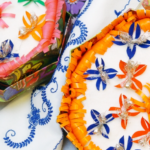Explore Port Wine
Portugal’s second city, Porto, is renowned for its vibrant cultural sites, gorgeous architecture, and, of course, its world-famous Port wine.
This delightful fortified wine, sweet and rich in flavor, has been produced in the Douro Valley for centuries and shipped from Porto to destinations worldwide. Winemaking in the Douro region does, in fact, stretch all the way back to the 4th century.
Porto’s close relationship with Port wine has shaped its culture and identity, making it the ideal destination for wine enthusiasts looking to experience this unique beverage firsthand.
In this blog, we will share tips and recommendations for the ultimate Port wine experience in Porto, from exploring the picturesque cellars and wine lodges of the city to savoring the complex flavors of this iconic drink.
Keep reading to learn about the world of Port wine, and we encourage you to join us on one of our Private Day Tours in Portugal to discover Portugal’s culture, cuisine, and wine for yourself!

Getting to Know Port Wine
Before diving into Port wine in Porto, it’s essential to understand its characteristics and production process.
Port wine is made primarily from indigenous Portuguese grape varieties and fortified with the grape spirit or brandy, which halts fermentation and retains the grapes’ natural sweetness.
There are several types of Port wine, including Ruby, Tawny, Vintage, Late Bottled Vintage (LBV), and the lesser-known White and Rosé Port wines. Ruby Ports are typically young and fruity, while Tawny Ports are aged in wooden barrels, resulting in a more complex flavor profile with notes of dried fruits, nuts, and spices.
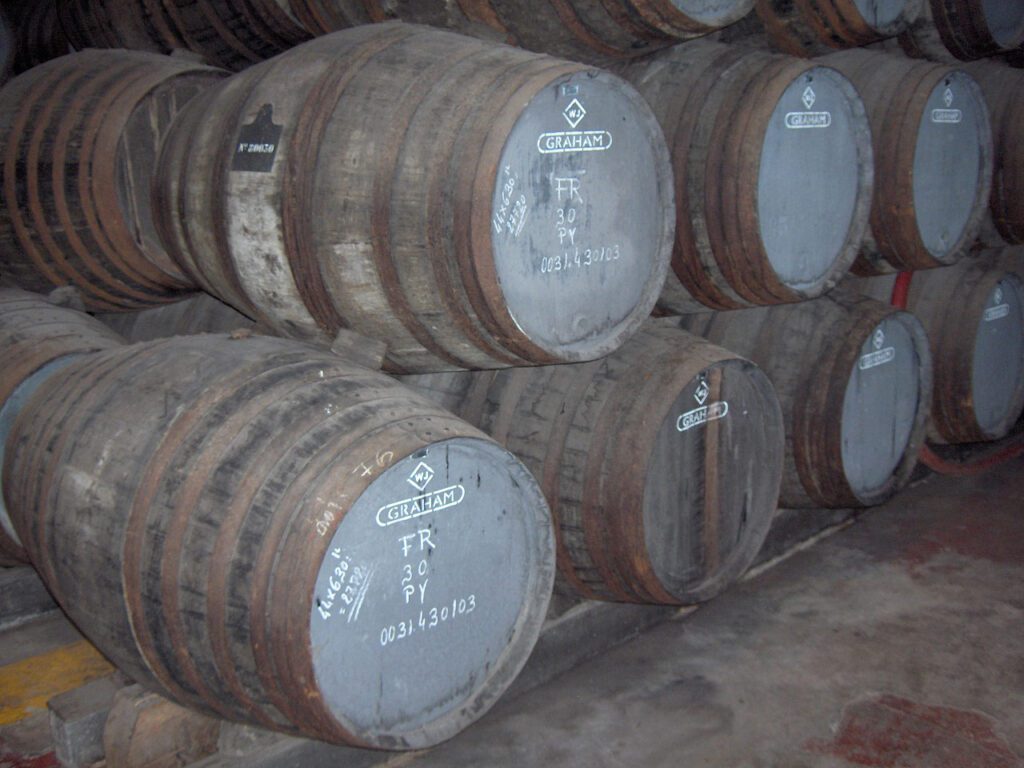
Vintage Ports represent the pinnacle of quality, made from the best grapes in exceptional years, and can age for decades, developing even greater complexity.
Delving deeper into the grape varieties used in the production of Port wine, we find a quintet of significant players, namely Touriga Nacional, Touriga Franca, Tinta Roriz (also known as Tempranillo in Spain), Tinta Barroca, and Tinto Cão. Touriga Nacional, known as the most refined and noble of the quintet, contributes concentrated flavors and floral aromas.
On the other hand, Touriga Franca is appreciated for its high yield and resilience, lending structure to the blend, while Tinta Roriz is known for adding body and finesse. With its high sugar content, Tinta Barroca contributes to the wine’s sweetness, while Tinto Cão brings a zesty acidity and longevity.
A critical aspect of Port Wine’s unique characteristics lies in its distinctive fermentation process. Traditional production involves crushing the grapes, often by foot in large stone lagares, to maximize skin contact and extract color, tannins, and flavor.
Once fermentation begins, it can proceed until approximately half of the grape sugars are converted to alcohol. At this stage, typically between 36 to 48 hours into fermentation, the process is abruptly halted by the addition of a neutral grape spirit, or aguardente. This addition preserves a significant amount of the natural sugars from the grape, contributing to Port’s distinctively luscious and sweet profile.
This fortification also increases the alcohol content to around 20%, creating a wine with an impressive shelf life that can mature and evolve beautifully over decades. The process illustrates how an interplay of grape variety and production methods, steeped in tradition and regulated by stringent rules, come together to produce the wonderfully diverse world of Port wine.
LBV Ports are aged for a shorter period but offer a similar experience to Vintage Ports at a more accessible price point. White and Rosé Ports are worth exploring for their unique flavors and versatility in cocktails and aperitifs.
See the breathtaking vineyards of the Douro Valley on our Douro Valley Private Tour.

Port Wine Cellars and Lodges
A visit to Porto would be incomplete without exploring the Vila Nova de Gaia district across the Douro River from the city’s historic center.
This area is home to numerous Port wine lodges and cellars (known as “caves”), where the wines are aged, blended, and bottled before being shipped across the globe. These lodges and cellars are essential to Porto’s wine culture, and many offer guided tours and tastings for visitors to discover the intricacies of Port wine production and aging.
Some top wine lodges and cellars to visit include Graham’s, Taylor’s, Sandeman, Ramos Pinto, and Ferreira. Each offers a unique experience, with opportunities to learn about the history, production techniques, and diverse styles of Port wine.
Exploring the Vila Nova de Gaia district is truly a step back in time. It’s interesting to note that each of the cellars or lodges you visit carries its unique story, deeply intertwined with the history of the Porto region itself.
The Graham’s Lodge, for instance, stands out as one of the last Port houses to remain family-owned throughout its rich history, a rarity in the industry. It was established in 1820 by brothers William and John Graham, hailing from a Scottish family of textile merchants. The Graham family’s commitment to producing premium Port wines remains unbroken after two centuries, a testament to their passion and dedication.
On the other hand, a visit to the Ferreira Cellars will take you on a journey through a captivating chapter of Portuguese history linked to one of the Douro region’s most influential figures, Dona Antónia Adelaide Ferreira.
Despite living in a predominantly male-driven society during the 19th century, Dona Antónia rose to prominence as a formidable businesswoman in the Port wine industry. She showed immense resilience and vision in the face of adversity, including the devastation of vineyards due to the Phylloxera plague. Her influence extends beyond winemaking, as she contributed significantly to improving the region’s infrastructure and living conditions of its inhabitants.
As you wander through the cellars that carry her name, you’ll appreciate not only the quality of the Port wines but also the indelible mark left by this remarkable woman.
Booking reservations in advance is recommended to make the most of your visit, as guided tours often fill up quickly.
Additionally, consider the accessibility of each location, as some lodges and cellars are located on steep hillsides, requiring visitors to navigate uneven terrain or climb numerous stairs. With some planning, visiting these historic cellars can provide a memorable and educational experience that brings you closer to the world of Port wine.
Our Porto Private Tour includes a Port wine tasting in one of the city’s traditional Port cellars.
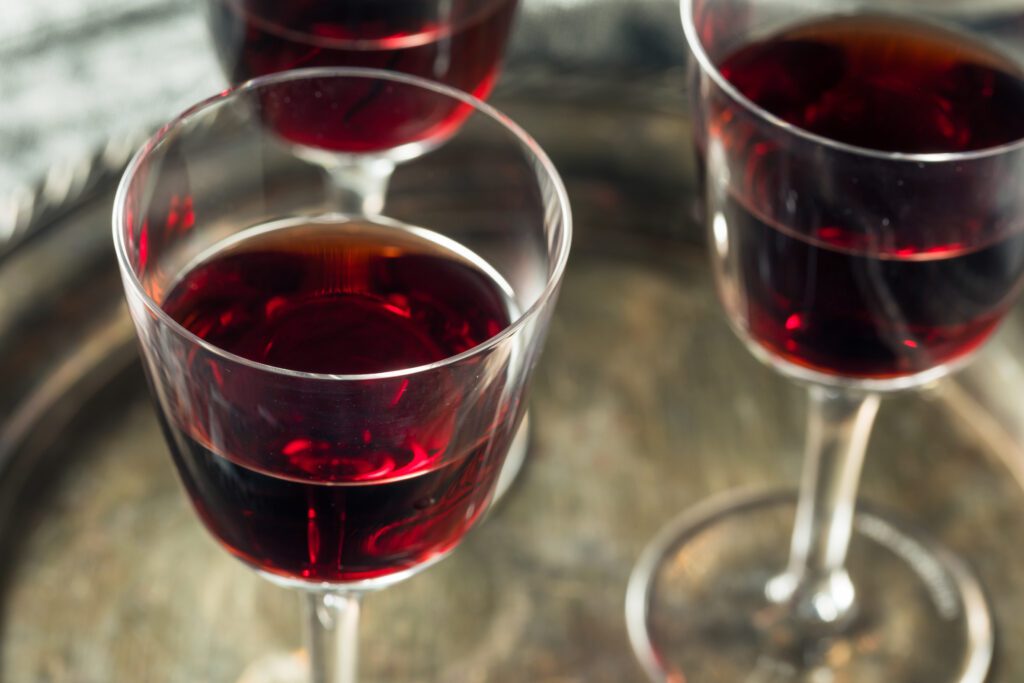
x
How to Taste Port Wine
Once you have explored the wine lodges and cellars of Porto, it’s time to indulge in the rich flavors and textures of Port wine.
As with all great wines, to fully appreciate the nuances of this distinctive drink, you should follow these four key steps: observe the wine’s appearance, smell the wine, taste the wine and note its flavours on your palate, and, finally, note the wine’s finish (aftertaste).
Observing the wine’s color and clarity can offer insights into its age and style. You will best enjoy the wine’s aroma, or “nose,” by gently swirling the glass and inhaling the bouquet of scents released.
When sipping the Port, savor the flavors on your palate, noting the wine’s sweetness, acidity, body, and tannins. Finally, assess the finish—the lingering taste and sensation after swallowing.
A well-balanced Port wine should offer a harmonious interplay of these elements, revealing a symphony of flavors that evolve and linger.
To enhance your tasting experience further, consider pairing Port wine with foods that complement its flavors and textures.
Cheese, especially strong and pungent varieties like blue cheese, can create a delightful contrast with the wine’s sweetness. Chocolate, particularly dark chocolate, also pairs beautifully with Port, as the bitter and fruity notes bring out the best in each other.
Nuts, such as almonds, hazelnuts, and walnuts, accentuate the nutty flavors often found in Tawny Ports. Finally, fruits like figs, dates, and berries can add a fresh, vibrant dimension to your Port wine experience.
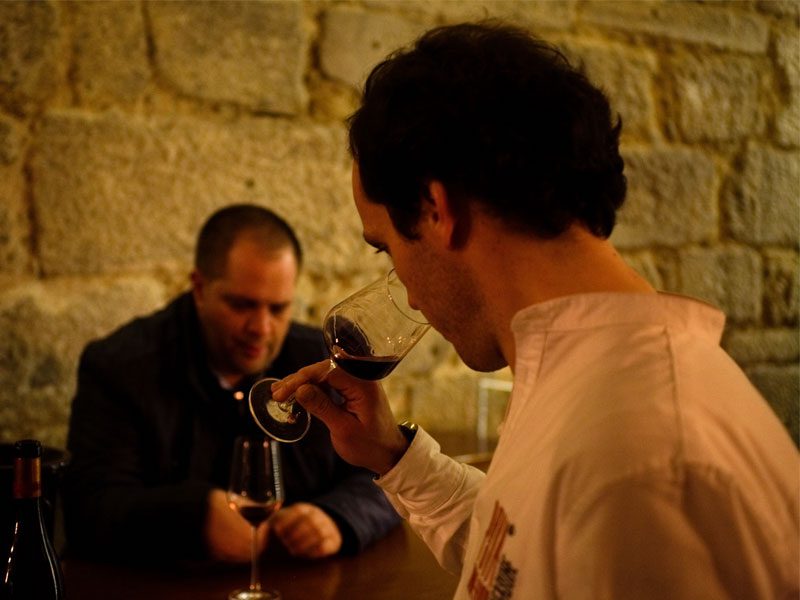
(Source: Prova)
Port Wine Bars and Restaurants
Each of the Port wine bars and restaurants in Porto provides a unique ambiance that complements their exceptional offerings.
Prova is one of the city’s most esteemed wine bars. Nestled in the heart of Porto’s downtown area, its understated elegance and cozy atmosphere make it the perfect spot for both Port wine connoisseurs and novices alike. The knowledgeable staff is passionate about their craft and always ready to help navigate the extensive list of Port wines.
Capela Incomum provides a distinctive experience as it’s situated in a converted chapel. This ‘hidden gem’ is as intriguing as it is inviting, with its vaulted ceilings and intimate, candlelit interior, providing an enchanting backdrop to your Port wine-tasting journey. It serves as a tranquil oasis amidst the city’s bustle, making it an ideal spot for a quiet evening of refined indulgence.
Wine Quay Bar, on the other hand, is a celebration of Porto’s vibrant riverside setting. Its location offers stunning views of the Douro River and the Vila Nova de Gaia district, an experience that becomes even more magical as the sun sets and the city lights begin to sparkle.
When it comes to dining establishments, Cantinho do Avillez stands out for its contemporary interpretation of traditional Portuguese cuisine. The lively and welcoming atmosphere makes it an excellent choice for an elevated dining experience. The Port wine selection is curated to complement the menu, providing a delightful gastronomic journey.
Last, but certainly not least, is the restaurant at The Yeatman Hotel, renowned for its Michelin-starred cuisine and its panoramic views of the city. The vista of Porto’s skyline, combined with the shimmering Douro River, is an awe-inspiring accompaniment to the hotel restaurant’s exquisite culinary offerings and extraordinary Port wine list. Here, you will experience the epitome of fine dining, with each detail meticulously curated for an unforgettable gastronomic adventure.
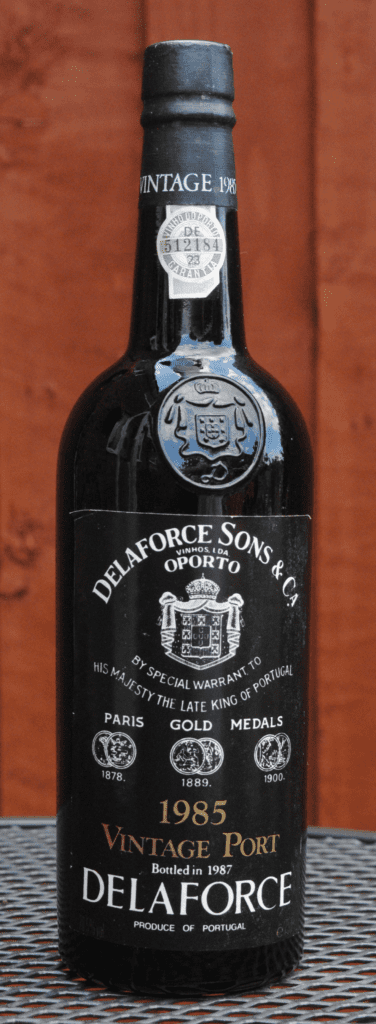
Buying Port Wine
After immersing yourself in Port wine, you may be eager to bring some bottles home as souvenirs or gifts.
Consider these tips to ensure that you select the best Port wines to suit your preferences and budget. First, familiarize yourself with the different types of Port wine, their flavor profiles, and ideal consumption periods.
For example, Ruby Ports are best enjoyed young, while Vintage and Tawny Ports can benefit from extended aging. Second, research reputable producers and consider trying a range of their offerings to determine which ones you prefer. Finally, don’t be afraid to ask for recommendations from wine professionals, as their expertise can guide you toward lesser-known gems that may become your new favorites.
Popular local wine shops in Porto, such as Garrafeira do Carmo and Wine O’Clock, offer a wide range of Port wines and knowledgeable staff who can assist you in making informed purchasing decisions.
Transporting Port wine back home requires careful consideration. Due to restrictions on carrying liquids in your carry-on luggage, you should pack your Port wine in your checked luggage.
Specialized wine protector sleeves are available to shield your bottles from impact and temperature fluctuations during your journey. As a further option, many cellars and brands in Porto offer international shipping services, which can be a convenient alternative, especially for larger purchases.
Once home, store your Port in a cool, dark place with a temperature between 55°F (13°C) and 65°F (18°C). Depending on the style, opened Port can last from a few days to a month. Ruby and Late Bottled Vintage Ports remain good for about two weeks, while Tawny Ports can last several weeks, and Vintage Ports should be consumed within a few days. Proper storage is key to maintaining Port wine’s quality and extending its longevity.
x
Port Wine’s Place in Porto’s Identity
The Port wine industry is deeply woven into the socio-economic fabric of Porto, providing significant employment opportunities from viticulture and winemaking to tourism and hospitality. The sales and export of Port wine contribute significantly to the local economy, with the global demand for this cherished wine driving economic growth. The industry has also funded the preservation of historical cellars and lodges, ensuring that the city’s rich wine-making heritage endures.
Visitors seeking a deeper understanding of Porto’s passion for Port wine should aim to experience the city’s wine-related events. The annual Festa de São João, a city-wide party filled with music, dancing, and grilled sardines, often features Port wine as a celebratory drink.
Alternatively, Port Wine Day, held in September, is a week-long festival devoted to showcasing the richness of Port wine culture with tastings, seminars, and tours. These events provide a remarkable opportunity to celebrate Porto’s love for its eponymous wine amidst a vibrant local atmosphere.
x
Discover Port Wine in Porto
Experiencing Port wine in Porto is a journey that combines history, culture, and sensory delight.
From exploring the picturesque wine lodges and Vila Nova de Gaia cellars to savoring the complex flavors of this iconic beverage in the city’s vibrant bars and restaurants, there is no shortage of opportunities to deepen your appreciation for this unique wine.
By engaging with experts and bringing home some bottles to enjoy, you can fully immerse yourself in Port wine and create lasting memories of your time in Porto.
So raise a glass and toast to your next adventure in this beautiful city – saúde!
If you have any questions, please get in touch.


